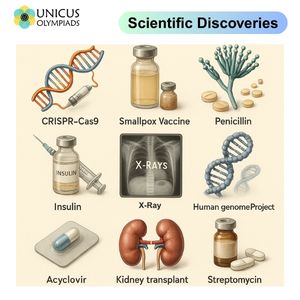

Throughout history, numerous scientific discoveries and advancements have dramatically reshaped the landscape of health and medicine. From revolutionary treatments to groundbreaking technologies, these innovations have saved millions of lives and improved quality of life across the globe. Below are some key discoveries in the fields of genetics, immunology, and medicine that have had a profound impact on human health.
CRISPR-Cas9: 2012

Smallpox Vaccine: 1796
Penicillin: 1928
Insulin: 1921
X-Rays: 1895
Human Genome Project: 2003
Acyclovir: 1982
Kidney Transplant: 1954
Streptomycin: 1943